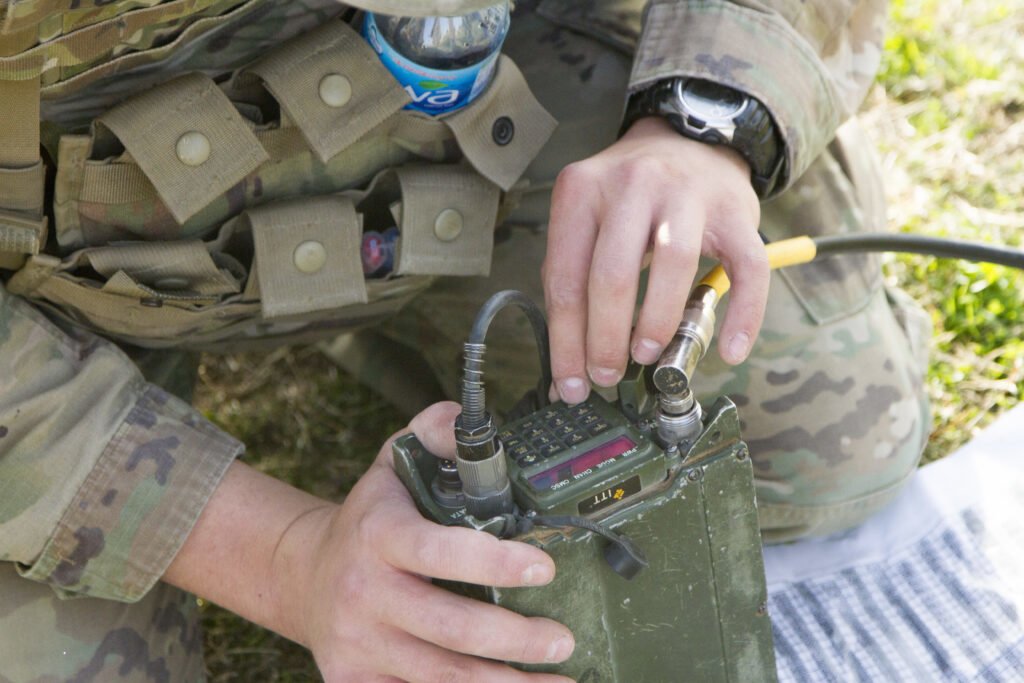As in Other Domains, U.S. Use of Electromagnetic Spectrum is Contested

An A6B-Prowler with the VAQ133 Electronic Attack Squadron speeds down the runway during takeoff at Al Asad Airfield, Iraq, April 29, 2010. Photo by Air Force Master Sergeant Linda Miller, courtesy of the Department of Defense.
That the U.S. military is no longer the only — or even the dominant — user of air, land, sea, space, and cyberspace is not disputed. In every domain where the U.S. military once went unchallenged, newcomers hope to usurp its long-held dominance. Less well-known are new challengers in the electromagnetic spectrum, the deputy director for the Defense Department’s Electromagnetic Spectrum Operations Cross Functional Team said.
“The joint force is critically dependent on [the electromagnetic spectrum] across our joint functions and our domains, yet often it is viewed as a commodity. It’s viewed as a utility, and it is assumed that it can be accessed at will,” said Air Force Maj. Gen. Lance Landrum, who spoke as part of a forum Wednesday with the Association of Old Crows. Landrum also serves as the deputy director for requirements and capability development in the Joint Staff’s force structure, resource and assessment directorate.

Photo by Sgt. Henry Villarama/U.S. Army.
The electromagnetic spectrum, or EMS, includes the array of frequencies used by communications equipment such as radios, GPS, cell phones and remotely controlled devices, for instance. While the United States has assumed in the past that it was alone or nearly alone while operating in this area, this is no longer the case. Both commercial interests and adversary militaries are now actively using the EMS for their own interests.
“For decades, the United States has enjoyed uncontested or dominant superiority in every operating domain,” Landrum said. “We generally could deploy our forces when we wanted, assemble them where we wanted and operate how we wanted. Today, every day, every domain is contested.”
American adversaries have been fielding systems and platforms to challenge U.S. traditional areas of advantage such as precision guidance, timing, low observable technology, space-based communications and intelligence, surveillance, and reconnaissance systems, the general said.
Additional advances in technology, he noted, have led to an increase in commercial and military EMS-enabled capabilities over the last few decades.

“The spectrum has become increasingly complex. More players are accessing and leveraging sections of bandwidth, making it congested,” he said. “And the spectrum is still constrained by the physics and the reality of that space.”
To deal with the complexities of new challenges in the EMS, Landrum said the Electromagnetic Spectrum Operations Cross Functional Team and the DOD chief information officer have been drafting a new EMS superiority strategy.
He said he believes that strategy can be signed by January and then work can start immediately to implement it. That implementation will be overseen by the vice chairman of the Joint Chiefs of Staff.
“The vice chairman will address the changes necessary in governance, manpower, training, readiness, and capabilities to achieve the strategies vision, which is freedom of action across the electromagnetic spectrum,” Landrum said.
To address capability gaps in the EMS, Landrum said the team is analyzing past and present investments in EMSO capabilities, and is also providing guidance to inform future DOD investment strategies in EMSO capabilities.

Landrum said that first priority is challenged, in part, by defining what constitutes an EMSO system.
“A lot of EMS-related capabilities are integrated into other items,” he said. “And while some are very clear — things like jammers, electronic countermeasure systems, and things like that — others are more nuanced. For instance, is investment in a new tactical radio an EMSO investment, or is it a sub-element of the radio, such as software that encrypts the communications or allows for dynamic spectrum maneuver?”
In terms of informing future investment in EMSO capabilities, the strategy is a comprehensive approach to acquire EMS capabilities suitable for great power competition, Landrum said.
“The DOD EMSO investment strategy seeks to achieve this objective by providing specific top-down recommendations related to concept-driven, threat-informed, EMSO capability development, addressing and prioritizing gaps across the requirements, acquisition, budgeting, and operations processes in the department,” he explained.
This article was originally published on May 20, 2020, by the Department of Defense.

Katie McCarthy is the managing editor for Coffee or Die Magazine. Her career in journalism began at the Columbus (Georgia) Ledger-Enquirer in 2008, where she learned to navigate the newsroom as a features reporter, copy editor, page designer, and online producer; prior to joining Coffee or Die, she worked for Outdoor Sportsman Group as an editor for Guns & Ammo magazine and their Special Interest Publications division. Katie currently lives in Indiana with her husband and two daughters.
BRCC and Bad Moon Print Press team up for an exclusive, limited-edition T-shirt design!
BRCC partners with Team Room Design for an exclusive T-shirt release!
Thirty Seconds Out has partnered with BRCC for an exclusive shirt design invoking the God of Winter.
Lucas O'Hara of Grizzly Forge has teamed up with BRCC for a badass, exclusive Shirt Club T-shirt design featuring his most popular knife and tiomahawk.
Coffee or Die sits down with one of the graphic designers behind Black Rifle Coffee's signature look and vibe.
Biden will award the Medal of Honor to a Vietnam War Army helicopter pilot who risked his life to save a reconnaissance team from almost certain death.
Ever wonder how much Jack Mandaville would f*ck sh*t up if he went back in time? The American Revolution didn't even see him coming.
A nearly 200-year-old West Point time capsule that at first appeared to yield little more than dust contains hidden treasure, the US Military Academy said.












